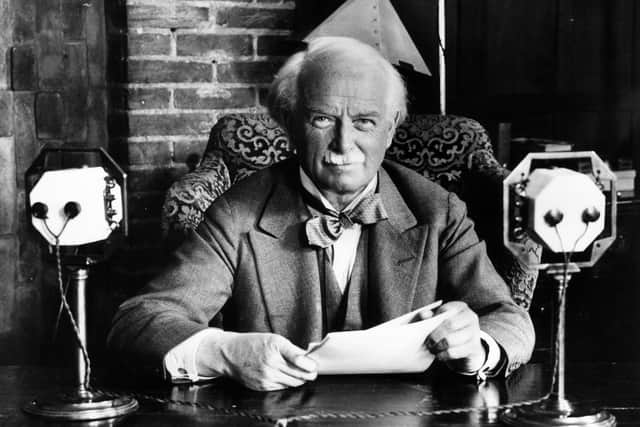Famous Mancunians: the people from Greater Manchester who have had the biggest impact on the world
and live on Freeview channel 276
Emmeline Pankhurst
Born in Manchester in 1858, Emmeline Pankhurst was a dedicated supporter of the women’s suffrage movement. She is known as the creator of Women’s Social & Political Union (WSPU) which she founded in 1903.
Pankhurst was inspired to create the WSPU after discovering her local Independent Labour Party would not allow women to become members. Over the years her efforts to achieve the vote for women resulted in her being imprisoned on multiple occasions.
Advertisement
Hide AdAdvertisement
Hide AdThe First World War saw women take up job roles left behind by the men who had gone to fight. Emmeline and her daughter Christabel saw this as the chance for women to show what they could do and to prove they deserved the vote, and so Pankhurst mobilised women. Many took up jobs in factories to keep the country and the war effort moving.
The first steps towards women being given the vote came following the war when women over the age of 30 were given the right. Although Universal Suffrage would not happen until a decade later, Pankhurst will be forever known as a vital cog in the machine.
LS Lowry
Streford born and bred Laurence Stephen Lowry, more commonly known as LS Lowry, is one of the most influential artists of the 20th century. Known for his depictions of life in and around the working class mill towns of the North West, Lowry created some of the most iconic works of recent years.
In 1930, Lowry created ‘Coming From The Mill’, a work which he described as his most characteristic mill scene. During the 1960s, he went about creating art works of sea landscapes and took several trips to the north east of England.
Advertisement
Hide AdAdvertisement
Hide AdBefore this, he built upon his interest in the UK’s industrial landscapes by visiting the mining areas of South Wales. Through these trips, Lowry created Bargoed 1965 and Hillside in Wales 1962.
Anthony Burgess
Despite being primarily a comic writer, it is Burgess’ dystopian novel ‘A Clockwork Orange’ which is his most well known work. Burgess was born in Harpurhey, Manchester in 1917 and his first novel titled ‘Time for A Tiger’ was published in 1956.
‘A Clockwork Orange’ was first published in 1962 and has been widely acknowledged as one of the most influential dystopian books of recent times. By the time of his death in 1993, Burgess had written over 30 fiction novels and 25 non-fiction books.
Alan Turing
So Alan Turing isn’t a born and bred Mancunian, however he spent many years living and working in Manchester. It was whilst working at the University of Manchester that he built the Manchester Mark 1- regarded as one of the first true computers.
Advertisement
Hide AdAdvertisement
Hide AdTuring is most well known for his work on cracking the Enigma code, the special form of communication used by the Nazis during the Second World War. Breaking Enigma is estimated to have shortened the war considerably, saving potentially millions of lives in the process.
Manchester has paid tribute to Turning to remember the work he carried out before, during and after the Second World War. In Manchester a road was named the Alan Turing Way and a bridge on that road called the Alan Turing Bridge. There is also a physics building at the university which has been named the Alan Turing Building.
David Lloyd-George


He may have gone on to be a significant political figure within 20th century history, but before all this David Lloyd George was born in Manchester to Welsh parents. He rose up through the ranks of the Liberal party as an MP for Caernarvon Boroughs, a seat he held for over 50 years.
His first role during the war was as minister for Munitions. Lloyd-George was given the task of repairing public faith in the war following the Shell Crisis of 1915. This was when a shortage of artillery shells for use by the British Army threatened to derail the war effort and led to political anxiety back home.
Advertisement
Hide AdAdvertisement
Hide AdLloyd-George became prime minister in 1916 as he formed part of a War Cabinet. This was set up following the departure of Herbert Asquith. He was prime minister through the end of the war and into the 1920s.
